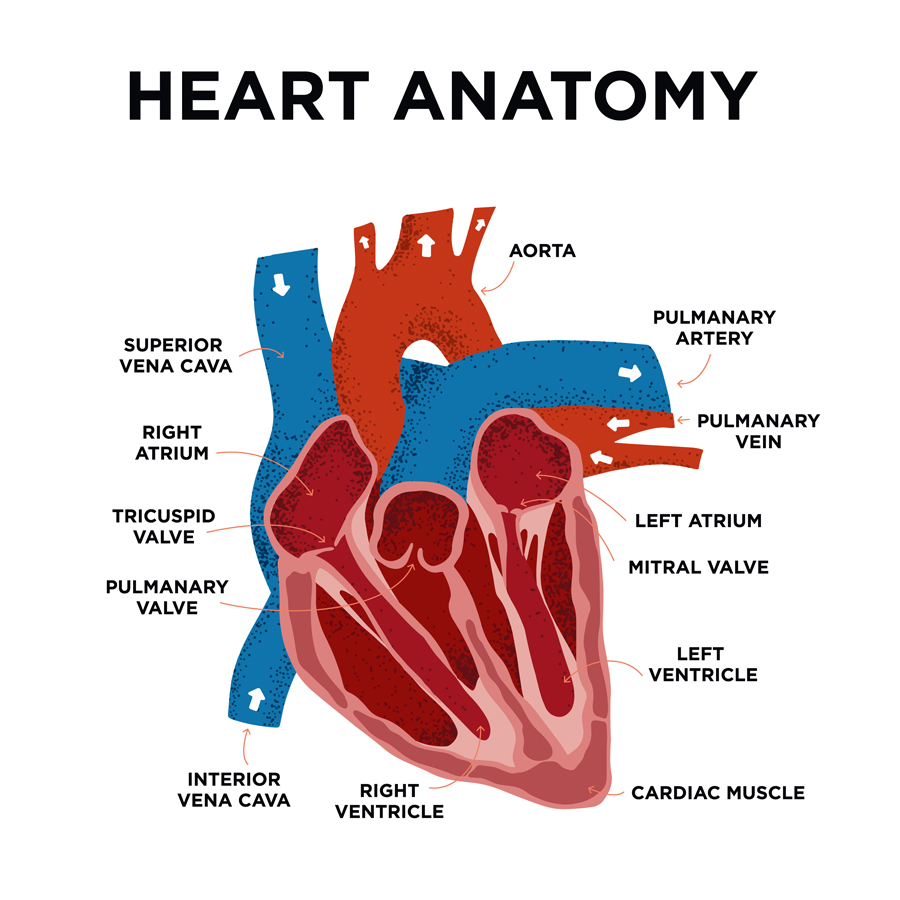When Your Heart Needs Care Prevention Is The Best Medicine
January 31, 2022
By: Mark Ralston
Categories: Heart Health
High blood pressure is the biggest cause of cardiovascular disease.
St. Mary’s celebrates Heart Month 2022 with a month-long series of blogs dedicated to the health of your heart. Join us each Tuesday and Thursday – plus some bonus days! – to learn how to keep your heart healthy for life!
Your heart is amazing. Over the course of an average lifetime, it will beat more than 2 million times. With each beat, it pumps blood to your entire body. Blood brings oxygen and nutrients to every muscle, nerve, organ and bone from your brain to your toes. And then it carries away carbon dioxide and other waste products so that your cells can live and work.
That’s why when your heart is sick, your life is in the balance.
Prevention is the best cure
An ounce of prevention is worth a pound of cure, as the old saying goes. Even with all the advanced technology and medicines available today, it’s far more effective to prevent damage than try to repair it. About 80% of heart attacks (and strokes) could be prevented with healthy lifestyle choices! But anyone, no matter how healthy they feel, can have cardiovascular disease.

The heart is a complex pump. It has four chambers: the right and left atriums and the right and left ventricles. At the start of a heartbeat cycle…
- The right atrium fills up with blood and then gives it a little push into the right ventricle.
- The right ventricle gives the blood a big push and sends it to the lungs.
- In the lungs, carbon dioxide is removed and oxygen is added.
- Blood from the lungs flows into the heart’s left atrium.
- The left atrium gives the oxygenated blood a little push into the left ventricle.
- The left ventricle gives the blood a big push out into the entire body.
The atriums squeeze first. Then the bigger, more powerful ventricles contract. This gives the heart its classic “ba-BUMP” beat. Valves keep blood from being pushed the wrong way. Between each beat, the muscular walls of the heart relax while the atria fill up with blood. At rest, a healthy adult’s heart will beat about 70 times a minute (less for athletes). Under full exertion – sprinting at top speed, for example – the heart may beat 180 times a minute (less for older adults).
How do the heart’s muscles know when to contract?
Tiny electrical signals travel throughout the heart to tell muscles when to contract. These signals are controlled by an extremely complex array of nerves. These nerves, in turn, are sensitive to everything happening in your body, from oxygen levels in your blood, to hormones levels, to your level of exertion, to feelings of fear, excitement or even calmness.
A word about blood pressure
Blood pressure is good. A blood pressure reading of 0/0 means your heart is not beating! But high blood pressure is bad. Healthy blood pressure is around 120/80. Generally, if your blood pressure is 130/80 or higher, you are at increased risk of heart attack, stroke and other serious health problems. But what do the numbers mean?
- 120/top number – This is the pressure inside your blood vessels when your ventricles contract and push blood out to the whole body. It is called systolic blood pressure.
- 80/bottom number – This is the pressure inside your blood vessels when your heart is at rest and isn’t actively pumping blood. It is called diastolic blood pressure.
When blood pressure levels are too high, the force of blood flowing through your body can cause damage to delicate tissues, especially in the brain, kidneys, heart and the blood vessels themselves. This is why high blood pressure is the biggest cause of cardiovascular disease.
So, what can I do to protect my heart and blood vessels?
According to the American Heart Association, here are things you can do to lower your risk of heart disease. We’ll explore several of these in more detail in the weeks ahead:
- Treat high blood pressure.
- Don’t smoke, and avoid second-hand smoke.
- Eat a heart-healthy diet that’s low in saturated and trans fats, sodium (salt) and added sugars.
- Get at least 150 minutes of moderate-intensity physical activity a week – an average of just 21 minutes a day.
- Reach and maintain a healthy weight.
- Control your blood sugar if you have diabetes.
- See your doctor for regular check-ups.
- Take your medicines exactly as prescribed.
Learn about Oconee Heart and Vascular Center, and Cardiology services at St. Mary's.
Read all of the Heart Month 2022 blog posts
- When Your Heart Needs Care: Signs and Symptoms of Trouble
- Heart Failure Sounds Terrifying! What Is It?
- When Your Heart Needs Care, St. Mary’s Cares For Your Heart
- When Your Heart Needs Care: Cardiac Devices - Pacemakers
- When Your Heart Needs Care: Cardiac Devices - ICD
- When Your Heart Needs Care: Cardiac Devices - Loop Recorders
- When Your Heart Needs Care: What Are Palpitations?
- When Your Heart Needs Care: The Bottom Line - Pay Attention to Chest Pain!
